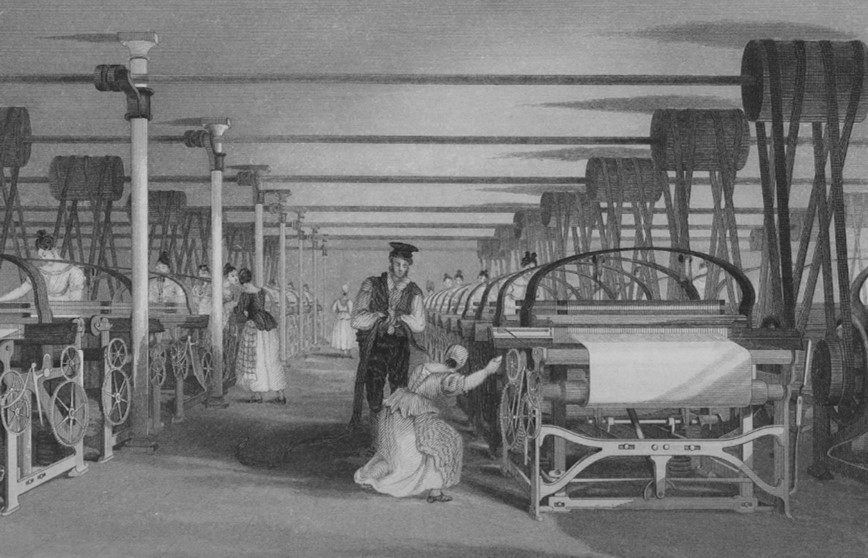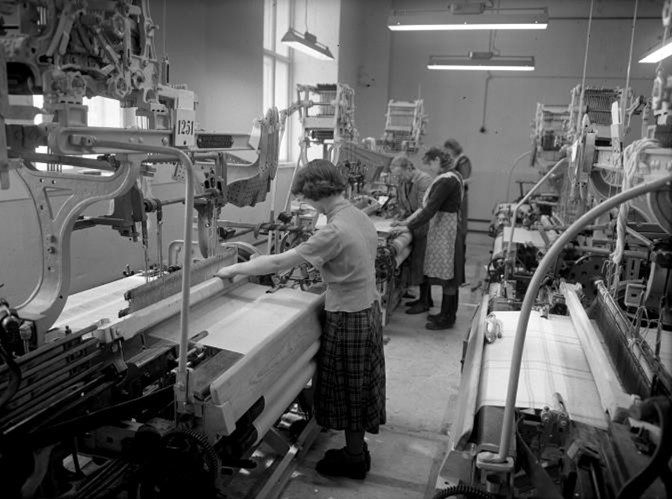By historian Joshua Daniels
It’s well-known that the coal, iron, steel and glass industries dominated the economies of Rotherham and Barnsley.
There was, however, another very prominent industry: linen.
Whilst textiles are more associated with what is now West Yorkshire, South Yorkshire was also a leading contributor to the industry.

Leeds produced a lot of the flax – a flower that linen is made from – which would then be transported via canal to Barnsley.
It’s 280 years since the first instance of linen spinning in Barnsley. William Wilson moved from Cheshire in 1744 and founded the industry with his nephew Joseph Beckett.
There, the fibres of the flax plant were made into shorter and thinner strands, before being spun into fabric.
In the early days, it was very much a cottage industry where most weavers in Barnsley would work on looms they kept in their own homes. William and Joseph had built 40 weavers’ cottages built at Worsbrough Common, with looms in the sheds next to the warehouse.
By the end of the 18th Century, weavers’ cottages were all around Barnsley. Weaving usually took place in the damp cellars which were good for the yarn but not so good for health, especially when a weaver spent up to 14 hours a day at work.
In the early 1800s, linen production had become one of Barnsley’s biggest industries, and so necessitated the creation of large-scale mills. Taylor’s Mill on Peel Street was the first power loom mill to be built in 1845.

Barnsley’s linen entrepreneurs also heavily contributed to the wider town’s prosperity. The Harvey family were linen manufacturers who were responsible for building the Mechanics Institute, what is now Barnsley Civic. They started in a small place off Shambles Street before moving to Mark Street. Their premises there would later become Barnsley’s central school.
Not far from where the town hall is, Samuel Cooper built a linen warehouse in the 1820s at St Mary’s Place. His son, Samuel Joseph, bought the old Holgate Grammar School and gifted that, and his collection of 200 paintings, to the town: it’s now the Cooper Gallery.
However, the industry declined rapidly from the late 1800s, and especially in the 1900s. This was due to fierce competition from areas such as Bradford, where textiles had increased and cotton was starting to be wanted more than linen.
Ultimately, Barnsley’s last linen mill announced its closure in 1956. Upon hearing the news, those who worked there broke down and cried, not just for the loss of their jobs, but for the loss of an industry that generations of their family had worked at.

Rotherham also had a stake in the linen industry. On the banks of the River Don, right next to the Minster, where the former Riverside Precinct was, Rotherham had a water-powered flax mill.
Like the ones in Leeds, it would have spun flax that would have become the threads that weavers would have woven into cloth.
Flax was grown in Yorkshire for centuries leading up to the 1900s, so flax would have come down the Don to be spun at Rotherham, before being transported to Barnsley to be woven.
This mill belonged to Percy Smith, who co-owned the mill with several different people over the years. The first recorded evidence of this mill was in 1851, and was actually fined for breaking laws on not containing smoke from this mill in 1866. There was also a record of a flax mill in Masbrough in 1848, although this was the record of its sale, and in 1844 there was record of a Mr. Charles Neale of Masbrough, who was a flax spinner.






